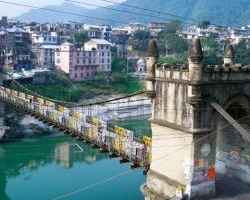By the beginning of the fourteenth century the entire area of Kinnaur was divided in seven parts, locally called sat khund. There was further splitting up of and the area came to be covered with many small hegemonies, which were constantly warring against, or allying with, each other as conditions required. The neighbouring Bhots also found time to jump into the fray and did not desist from creating trouble. There are various forts like labrang, Morang, and Kamru forts telling the story of that age.
In the medieval period, though some of the hill states such as Kangra, Chamba and Sirmaur were attacked and made tributary to the Mughal emperor at Delhi, Bushahr state could not be reached by any adventurer of that time.The consolidation and addition of territories of the Bushahr state continued during the period also. The Thakoorais of Dulaitoo, Kurungoloo and Kuaitro were annexed about Samwat 1611. Raja Chatar Singh who brought the whole area of the erswhile Bushahr State under his control. He was considered most virtuous ruler during his reign. Nothing particular known about his successor Kalyan Singh. The successor of Kalyan Singh according to generalogy was Raja Kehri Singh. He is the hightest skilled warrior of the time. Kehri Singh's successor were not of the same mattle. Besides mention in genealogy of Bushahr State, nothing is known about Vijay Singh and Udai Singh. It is said that one Raja Ram Singh made Rampur his capital in place of Sarahan and Kamru. During his reign a series of contests began with the Raja of Kulu and Bushahr had lost the territory of Seraj. It seems that the territories which were annexed by Raja Kehri Singh became free during the weak rule of Raja Rudra Singh. But his successor Ugar Singh took them over by force of arms--




Comment with Facebook Box